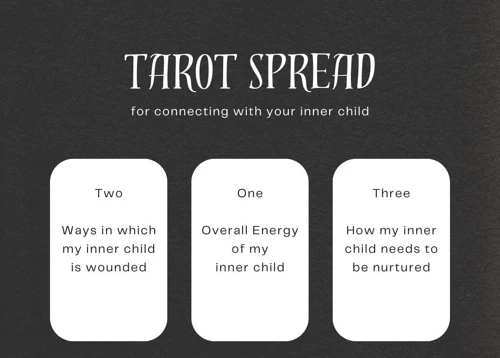Have you ever been searching for a unique and introspective way to navigate through life’s challenges? Look no further than the ancient art of Tarot. This centuries-old practice is not just about fortune-telling, but can also serve as a powerful tool for self-reflection and healing anxiety. By connecting with your inner self, identifying patterns and themes, and deepening self-awareness, Tarot can guide you on a transformative journey. In this article, we will explore how Tarot can be utilized to gain clarity and perspective, foster emotional release, and provide empowering guidance. We will also delve into different methods for Tarot self-reflection and anxiety healing, as well as exploring how Tarot can be used in conjunction with other healing practices. Embark on this enlightening journey with the Tarot as your trusty companion, and discover a path to self-discovery and inner peace.
Contents
- What is Tarot?
- Using Tarot for Self-Reflection
- Using Tarot for Healing Anxiety
- Methods for Tarot Self-Reflection and Anxiety Healing
- Using Tarot in Conjunction with Other Healing Practices
- Conclusion
-
Frequently Asked Questions
- What can Tarot readings reveal?
- Do Tarot cards predict the future?
- Can anyone learn to read Tarot cards?
- Is Tarot associated with any religious beliefs?
- Are Tarot readings accurate?
- Can Tarot cards help with decision making?
- Can Tarot readings be done remotely?
- Is Tarot a form of therapy?
- How often should I consult Tarot cards?
- Can Tarot readings help with anxiety?
- References
What is Tarot?
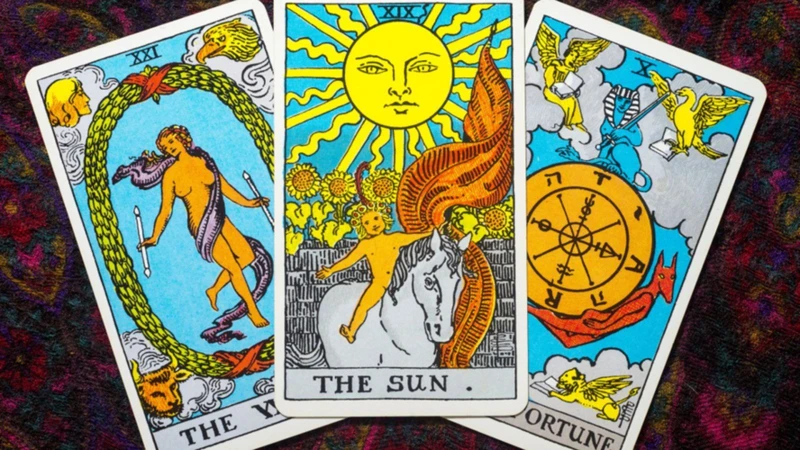
The Tarot is a mystical system comprised of a deck of cards that are rich with symbolism and meaning. Originating in the 15th century, Tarot was initially used as playing cards in Europe before evolving into a tool for divination and self-reflection. Unlike traditional playing cards, Tarot cards feature intricate imagery and symbolism that represent various archetypes, elements, and life experiences. Each card carries its own unique energy and message, allowing for deep introspection and exploration of the subconscious mind. Tarot readings can provide insights into past, present, and future events, as well as shed light on our own thoughts, feelings, and behaviors.
Origin and Purpose
The origin of Tarot can be traced back to the cultural melting pot of Renaissance Europe. While the exact origins remain a mystery, it is commonly believed that Tarot cards were initially used as playing cards in Italy in the late 14th century. Over time, the cards began to take on a deeper meaning, with mystical and esoteric symbolism being attributed to them. In the 18th century, Tarot cards started to be associated with divination and spiritual practices, attracting the attention of occultists and mystics.
The purpose of Tarot extends beyond mere fortune-telling. It serves as a tool for self-reflection, introspection, and personal growth. Through the use of Tarot cards, individuals can tap into their intuition and gain valuable insights into their own psyche. The cards act as a catalyst for self-discovery, bringing aspects of the unconscious mind to the surface. By exploring the archetypal imagery and symbolism depicted on the cards, individuals can gain a deeper understanding of their own motivations, fears, and desires. Tarot can help uncover hidden patterns, illuminate blind spots, and provide guidance in navigating life’s challenges.
Tarot can be a valuable resource for those seeking to explore their own spirituality and inner world. It offers a means of connecting with the collective unconscious and accessing universal wisdom. Whether used for personal contemplation, guidance in decision-making, or as part of a spiritual practice, Tarot has the potential to foster personal growth, insight, and transformation.
If you’re interested in exploring how Tarot can be used specifically for anxiety, check out our article on “Tarot Rituals to Ease Anxiety.”
The Tarot Deck
The Tarot deck consists of 78 cards, divided into two main categories: the Major Arcana and the Minor Arcana. The Major Arcana comprises 22 cards that represent significant life events and milestones. Each card is adorned with powerful imagery, such as The Fool, The Magician, and The World, each carrying a unique message and lesson. The Minor Arcana consists of 56 cards, further divided into four suits: Wands, Cups, Swords, and Pentacles. These suits correspond to different aspects of life, such as creativity, emotions, intellect, and materiality. Each suit consists of Ace to Ten, along with four Court Cards: Page, Knight, Queen, and King. Together, these cards offer a comprehensive representation of the human experience and the various energies that shape our lives. Exploring the Tarot deck can be a transformative experience, providing deep insights into our own strengths, challenges, and resilience in the face of anxiety and adversity. When used in conjunction with tarot rituals, the Tarot deck can become a powerful tool for self-reflection and personal growth.
Using Tarot for Self-Reflection
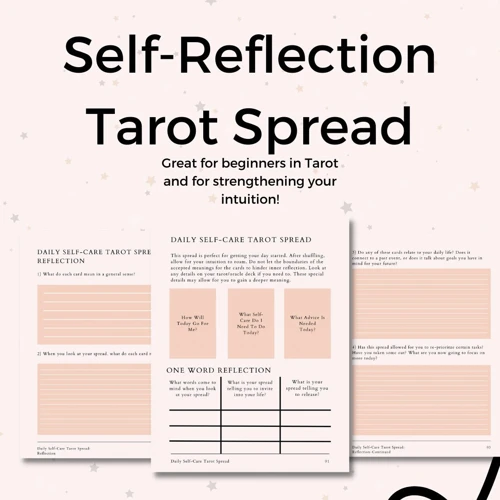
Using Tarot for self-reflection is a powerful practice that allows individuals to delve deep within themselves and gain valuable insights about their lives. One of the main benefits of using Tarot for self-reflection is the ability to connect with your inner self. By drawing cards and examining their meanings, you can tap into your intuition and uncover hidden aspects of your personality, desires, and fears. Tarot can help you identify patterns and themes in your life that may be influencing your actions and decisions. Through regular Tarot readings and reflection, you can gain a deeper understanding of yourself and the situations you encounter. This increased self-awareness can lead to personal growth and transformation. Additionally, Tarot can serve as a tool for introspection, helping you explore your emotions, thoughts, and beliefs in a safe and non-judgmental way. By engaging with the imagery and symbols on the cards, you can gain clarity about your feelings and experiences. Tarot can be particularly beneficial for those struggling with anxiety, as it provides a structured and focused way to examine and process their emotions. Whether you explore Tarot as a beginner or have been working with the cards for years, using Tarot for self-reflection can be a profound and enlightening journey of discovery. (Reference: “Exploring Tarot for Anxiety“).
Connecting with Your Inner Self
Connecting with your inner self is a fundamental aspect of using Tarot for self-reflection and healing anxiety. Tarot cards serve as a bridge between our conscious and subconscious minds, allowing us to tap into our intuition and gain deeper insights into our emotions and experiences. By focusing on a particular issue or question while shuffling and drawing cards, we engage in a process of self-inquiry that helps us uncover hidden truths and subconscious patterns. Through this practice, we can develop a stronger connection with our intuition and inner wisdom, empowering us to make decisions aligned with our authentic selves. Tarot readings also encourage introspection and contemplation, providing a safe space for self-reflection and exploration. It’s important to approach these sessions with an open mind and a willingness to listen to the messages that arise from within. By embracing this connection with our inner selves, we can embark on a journey of self-discovery, healing, and personal growth.
Identifying Patterns and Themes
Identifying patterns and themes within Tarot readings is a key aspect of using Tarot for self-reflection and healing anxiety. By examining the cards drawn over time, you may begin to notice recurring symbols, colors, or numbers that hold significance for you. These patterns can provide valuable insights into your inner thoughts, emotions, and experiences. For example, if you consistently draw cards associated with strength and resilience, it may indicate that these qualities are prominent in your life or that they are areas in which you need to focus. On the other hand, if you frequently encounter cards representing anxiety or fear, it can serve as a signal to explore the root causes of these feelings. By recognizing these patterns and themes, you can gain a deeper understanding of your subconscious mind and how it may be influencing your emotions and behaviors. This new awareness can then guide you towards personal growth and healing. (If you’d like to learn more about using Tarot for strength and resilience in the face of anxiety, you can check out our article on Tarot for Strength and Resilience in Anxiety.)
Deepening Self-Awareness
Deepening self-awareness is a fundamental aspect of using Tarot for self-reflection and healing anxiety. Tarot cards serve as a mirror to the subconscious mind, allowing us to gain a deeper understanding of our emotions, desires, and motivations. By studying the imagery and symbolism within the cards, we can uncover hidden aspects of ourselves that may have been buried or overlooked. Each card represents different aspects of our personality, experiences, and challenges. Through thoughtful contemplation and interpretation, we can gain insights into our patterns of behavior, limiting beliefs, and areas of growth. Tarot encourages us to explore our thoughts and feelings with honesty and vulnerability, providing a safe and supportive space to delve into our inner world. This process of self-reflection fosters a greater sense of self-awareness, allowing us to make conscious choices and take proactive steps towards personal growth and healing. By developing a deeper understanding of ourselves, we can navigate anxiety with greater clarity and resilience.
Using Tarot for Healing Anxiety
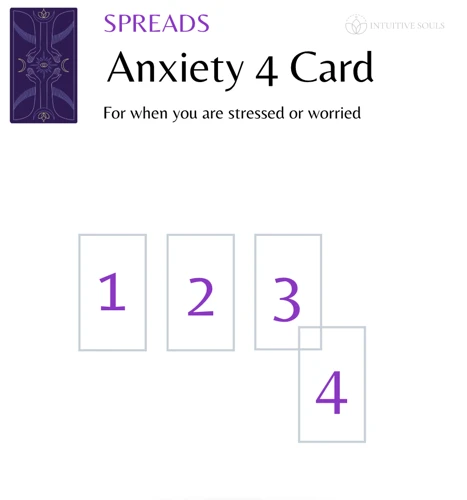
The practice of using Tarot for healing anxiety is a powerful way to find solace and peace within. Tarot cards can bring clarity and perspective to the anxious mind, helping to alleviate the overwhelming thoughts and emotions that anxiety often brings. Through a Tarot reading, individuals can gain insights into the root causes of their anxiety, uncover hidden fears, and identify underlying patterns that contribute to their anxious state. The symbolic imagery on the Tarot cards allows for a deeper understanding of the inner workings of the mind and emotions, offering a fresh perspective on challenging situations. Tarot can also serve as a catalyst for emotional release, allowing individuals to acknowledge and process their anxieties in a supportive and non-judgmental space. Tarot provides empowering guidance by offering practical advice, affirmations, and suggestions for self-care and self-improvement. By incorporating Tarot into their anxiety healing practices, individuals can tap into their own inner wisdom and strength to navigate their anxiety with resilience and confidence.
Bringing Clarity and Perspective
Bringing Clarity and Perspective:
One of the powerful ways to use Tarot for healing anxiety is by bringing clarity and perspective to our challenging situations. When we are consumed by anxiety, our thoughts and emotions can become overwhelming and cloud our judgment. Tarot cards serve as a mirror that reflects our innermost thoughts and feelings, enabling us to gain a fresh perspective on our anxieties. Each card in the Tarot deck represents specific aspects of life, such as love, relationships, career, and personal growth. By laying out the cards and examining their meanings in relation to our concerns, we can gain insights into the underlying causes of our anxiety and find clarity in the situation at hand. The imagery and symbolism on the cards often trigger intuitive responses within us, allowing us to view our anxieties from a new angle. Tarot helps us zoom out from our immediate worries and see the bigger picture, providing a sense of perspective that can be invaluable in managing anxiety. With this newfound clarity, we can make more informed decisions and take steps toward healing and growth.
Fostering Emotional Release
Fostering emotional release is one of the powerful ways in which Tarot can aid in healing anxiety. When we experience anxiety, our emotions can become bottled up, causing tension and discomfort. Tarot offers a safe space to explore and release these emotions. During a Tarot reading, the cards can act as mirrors, reflecting back to us the emotions and fears that we may have been suppressing or ignoring. The imagery and symbolism on the cards can evoke deep emotional responses, allowing us to connect with and acknowledge our feelings. Through the process of identifying and acknowledging our emotions, we can begin to release them. This release can be cathartic and transformative, allowing us to let go of emotional baggage and find a sense of relief. Tarot can serve as a tool for emotional catharsis, enabling us to express ourselves in ways we may not have been able to before. Whether it’s through tears, journaling, or simply talking about our feelings, Tarot provides a supportive and non-judgmental space for emotional release. By fostering emotional release, Tarot can bring us a sense of lightness and freedom, empowering us to move forward on our healing journey.
Providing Empowering Guidance
Tarot has the remarkable ability to provide empowering guidance when it comes to navigating through difficult situations and making important decisions. The cards act as a mirror, reflecting the inner wisdom and intuition that already exist within us, but may be clouded by doubt or uncertainty. Each card represents a different aspect of life, offering insights and perspectives that can help us gain clarity and reassurance. The guidance provided by Tarot is not deterministic, but rather an affirmation of our own inner knowing. It empowers us to trust our instincts and make choices that align with our values and desires. Whether seeking advice on relationships, career paths, or personal growth, Tarot can offer valuable perspectives and support our journey towards self-empowerment and fulfillment. By tapping into the wisdom of the cards, we can find the confidence to embrace our true selves and take courageous steps forward.
Link: Exploring Tarot for Strength and Resilience in Anxiety
Methods for Tarot Self-Reflection and Anxiety Healing
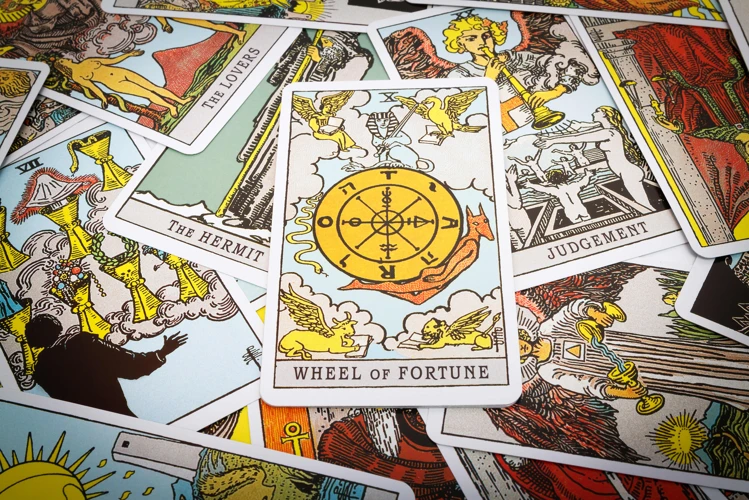
Methods for Tarot Self-Reflection and Anxiety Healing can be personalized to suit your unique needs and preferences. Here are a few techniques to incorporate Tarot into your self-reflection and anxiety healing practices:
1. Personal Daily Tarot Draws: Start each day with a personal Tarot draw, where you select one card to serve as your guiding message or theme for the day. Reflect on the card’s imagery, symbolism, and message, and contemplate how it relates to your current situation or emotional state. This practice helps you set intentions, gain insights, and maintain a mindful awareness throughout your day.
2. Journaling and Reflection: Keep a Tarot journal to record your Tarot readings, personal interpretations, and reflections. Write about your emotional reactions, any insights gained, and how the cards relate to your feelings of anxiety. Journaling serves as a cathartic outlet and aids in processing and understanding your emotions. It also allows you to track themes and patterns that may be contributing to your anxiety, providing an opportunity for deeper self-reflection.
3. Meditative Tarot Sessions: Set aside dedicated time for meditative Tarot sessions, where you can create a peaceful and sacred space to immerse yourself in the energy of the cards. Begin by focusing on your breath and grounding yourself. Then, draw a card or several cards and allow their symbolism to guide your meditation. Use the imagery as a catalyst for visualizations and deep introspection. This practice promotes relaxation, self-awareness, and can aid in uncovering underlying causes of anxiety.
Remember, Tarot is a tool for self-reflection and healing, so trust your intuition and find the methods that resonate with you. Experiment with different techniques, combine them, and allow your Tarot practice to evolve alongside your personal growth journey. With dedication and an open mind, Tarot can become an empowering and transformative ally in your quest for self-discovery and anxiety healing.
Personal Daily Tarot Draws
Personal daily Tarot draws are a powerful practice for self-reflection and gaining insight into your daily experiences. The process involves selecting a single Tarot card each day and contemplating its meaning and message. To begin, find a quiet and sacred space where you can focus your attention. Shuffle the Tarot deck while holding a specific question or intention in mind. Draw one card from the deck and uncover its hidden wisdom. Each card holds a unique energy and represents different aspects of life, such as love, career, or personal growth. Take the time to analyze the imagery, symbolism, and keywords associated with the card. Reflect on how it relates to your current circumstances and what guidance it may offer. Journaling can be a helpful addition to this practice, allowing you to record your thoughts, emotions, and any insights gained from the daily draw. By incorporating personal daily Tarot draws into your routine, you can cultivate self-awareness, gain clarity, and navigate the complexities of life with a renewed sense of purpose and guidance.
Journaling and Reflection
Journaling and reflection are powerful ways to deepen your Tarot practice and enhance self-reflection and healing. By incorporating these practices into your Tarot journey, you can gain a deeper understanding of your thoughts, emotions, and patterns that may be contributing to anxiety. Start by choosing a quiet and comfortable space where you can fully immerse yourself in the process. Begin by drawing a Tarot card that resonates with your current state of being or anxiety. Take a moment to study the card’s imagery and symbolism, allowing it to speak to you on a subconscious level. As you journal, write down your initial impressions, emotions, and any thoughts that come to mind when looking at the card. Explore the card’s meaning and reflect on how it relates to your anxiety. Consider questions such as: What aspects of this card resonate with my anxiety? What lessons or messages can I take from this card to ease my anxiety? Write freely, allowing your thoughts and feelings to flow without judgment. This process of journaling and reflection allows you to dive deeper into the themes and patterns that may be contributing to your anxiety. It brings clarity to your thoughts and emotions, and provides a space for self-discovery and healing. Further enhance your journaling practice by drawing additional Tarot cards and exploring their connections to your anxiety. Through this process, you can gain valuable insights and develop strategies for managing and healing anxiety.
Meditative Tarot Sessions
Meditative Tarot sessions can be a powerful and transformative practice for self-reflection and healing anxiety. By combining the calming practice of meditation with the intuitive guidance of Tarot, we can access a state of deep relaxation and heightened awareness. To begin a meditative Tarot session, find a quiet and comfortable space where you won’t be disturbed. Take a few moments to ground yourself, focusing on your breath and allowing any tension to melt away. Once you feel centered, shuffle the Tarot deck and select a card that resonates with you in the present moment. Close your eyes and hold the card in your hands, allowing its energy to flow through you. Visualize the imagery of the card, immersing yourself in its symbolism and messages. As you continue to breathe deeply, ask yourself questions related to the card and your current state of anxiety. Let the answers come intuitively, without judgment or expectation. Trust in the wisdom of the Tarot and the guidance it provides. After your meditation, take some time to journal about your experience and reflect on any insights or revelations that arose. Meditative Tarot sessions can serve as a calming and introspective practice, helping to alleviate anxiety and cultivate a deeper sense of self-awareness.
Using Tarot in Conjunction with Other Healing Practices
Using Tarot in conjunction with other healing practices can amplify the transformative power of the cards and enhance the healing journey. Here are a few practices that can complement and deepen the Tarot experience:
1. Meditation: Incorporating meditation practices alongside Tarot can create a calm and focused state of mind, allowing for a deeper connection with the cards. Start by taking a few moments to sit in a quiet space, clear your mind, and then draw a card. Allow the imagery and symbolism to guide your meditation, and reflect on the messages that come through.
2. Crystals: Crystals have their own unique energy and can be used to enhance the energetic vibrations of the Tarot cards. Choose crystals that resonate with your intention or the overall theme of your Tarot reading. Place the crystals on your Tarot deck or use them during meditation for an added layer of energetic support.
3. Aromatherapy: Engaging the sense of smell through aromatherapy can create a soothing and supportive environment for your Tarot practice. Use essential oils such as lavender, frankincense, or sandalwood to promote relaxation, clarity, and spiritual connection. You can diffuse the oils, apply them topically, or create a sacred space by anointing your Tarot cards.
4. Journaling: Combining Tarot with journaling allows for a deeper exploration and understanding of the messages that come through the cards. After a Tarot reading, take some time to write down your thoughts, emotions, and any insights that were gained. Journaling can help to solidify and integrate the wisdom and guidance received from the Tarot.
5. Rituals: Incorporating rituals into your Tarot practice can add a sense of sacredness and intentionality. Create rituals that align with your personal beliefs or cultural traditions. For example, you can light candles, say affirmations, or perform a cleansing ritual before a Tarot reading. These rituals can help create a focused and sacred space for your Tarot practice.
Remember, the key is to find practices that resonate with you and support your personal healing journey. Experiment with different modalities and see what feels most authentic and empowering to you. Using Tarot in conjunction with other healing practices can deepen your self-reflection, enhance your intuition, and promote overall well-being.
Conclusion
In conclusion, Tarot can serve as a powerful tool for self-reflection and healing anxiety. By connecting with our inner selves, identifying patterns and themes, and deepening self-awareness, we can embark on a transformative journey of self-discovery and inner peace. Tarot offers a unique way to gain clarity and perspective, foster emotional release, and receive empowering guidance. Through personal daily Tarot draws, journaling and reflection, and meditative Tarot sessions, we can tap into the wisdom of the cards and gain valuable insights into our lives. Furthermore, Tarot can be used in conjunction with other healing practices to enhance our understanding of ourselves and our anxiety. Whether you are a beginner or an experienced practitioner, harnessing the power of Tarot can bring about profound shifts in our perception, mindset, and overall well-being. So grab your Tarot deck, embark on this enlightening journey, and harness the wisdom of the cards to facilitate self-reflection and healing in your life.
Frequently Asked Questions
What can Tarot readings reveal?
Tarot readings can reveal insights into various aspects of your life, including relationships, career, personal growth, and spiritual development. They can provide guidance, clarity, and a fresh perspective on situations you may be facing.
Do Tarot cards predict the future?
Tarot cards do not predict the future with absolute certainty. Instead, they offer potential outcomes based on current energies and circumstances. Your actions and choices can influence the future, so Tarot readings serve as a tool for guidance rather than a fixed prediction.
Can anyone learn to read Tarot cards?
Yes, anyone can learn to read Tarot cards. While some people may have a natural affinity or intuition for it, with dedication, practice, and an open mind, anyone can develop the skills necessary to interpret Tarot cards and gain insight.
Is Tarot associated with any religious beliefs?
Tarot itself is not tied to any specific religious beliefs. It is a tool that can be used within various spiritual and religious practices or approached from a secular perspective. It is versatile and adaptable, allowing individuals to incorporate their own beliefs and interpretations.
Are Tarot readings accurate?
The accuracy of Tarot readings depends on several factors, including the skill and intuition of the reader, the clarity of the question or intention, and the receptiveness of the individual seeking the reading. Tarot readings can provide valuable insights and guidance, but outcomes ultimately depend on individual choices and actions.
Can Tarot cards help with decision making?
Yes, Tarot cards can be a helpful tool for decision making. They provide fresh perspectives, highlight potential outcomes, and foster introspection. They can help you explore different options and consider the potential consequences of your choices.
Can Tarot readings be done remotely?
Absolutely! Tarot readings can be done remotely through various mediums, such as online video calls, phone calls, or even email. Distance does not limit the accuracy or effectiveness of a Tarot reading.
Is Tarot a form of therapy?
Tarot can be used as a complementary tool in therapy, but it is not a substitute for professional therapy. Tarot readings can provide insights, support self-reflection, and promote personal growth, but they should not replace the guidance of a qualified mental health professional.
How often should I consult Tarot cards?
There is no set frequency for consulting Tarot cards. It’s a personal choice and depends on your needs and circumstances. Some individuals consult Tarot on a daily or weekly basis, while others seek guidance during significant life events or when facing specific challenges.
Can Tarot readings help with anxiety?
Yes, Tarot readings can be a beneficial tool for managing anxiety. They can bring clarity and perspective to anxious thoughts, provide insight into underlying causes, and offer guidance on coping strategies and self-care practices.
